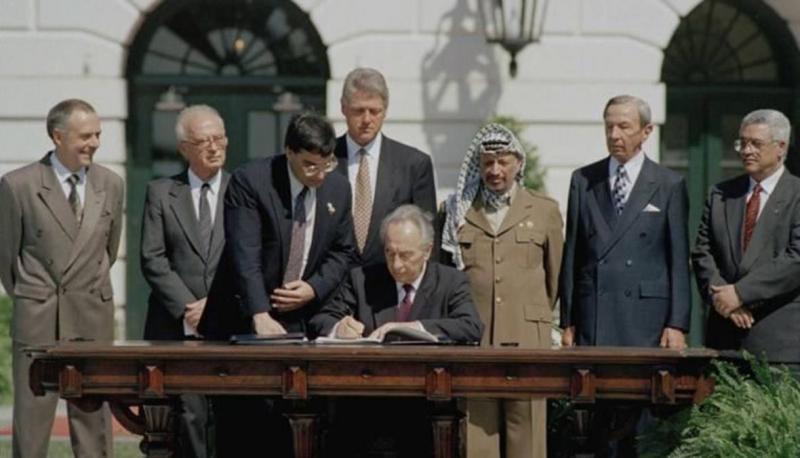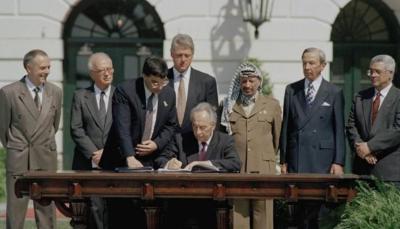Three decades have passed since the Palestinians and Israelis signed the first Oslo Agreement on September 13, 1993, which led to mutual recognition between the Palestine Liberation Organization (PLO) and Israel and initiated what became known as the peace process. Despite all these years since the agreement and its perception as the fruit of peace between the two sides, Israeli Prime Minister Benjamin Netanyahu attacked it during a closed session of the Knesset's Foreign Affairs and Security Committee on Monday, describing it as a catastrophe. Netanyahu regarded the Oslo Agreements as a fundamental mistake, claiming it brought in the most anti-Zionist and anti-Jewish individuals, according to the Israeli Broadcasting Authority revealed on Tuesday.
Netanyahu's comments came in the context of a dispute with the U.S. regarding the future of Gaza post-Hamas, stating that he would not allow an Osian mistake to be repeated, asserting that "Gaza will not be a Hamasstan nor a Fatahstan."
So, what is the Oslo Agreement and what are its main provisions? The Oslo Agreement, or the first Oslo Agreement, officially known as the Declaration of Principles on Interim Self-Government Arrangements, is a peace agreement signed by Israel and the Palestine Liberation Organization in Washington D.C. on September 13, 1993, in the presence of former U.S. President Bill Clinton. The agreement is named after Oslo, Norway, where secret talks held in 1991 led to this agreement, which emerged from what became known as the Madrid Conference.
The agreement consists of 17 articles, starting from the declaration of principles regarding Palestinian self-governance arrangements and ending with dispute resolution and Israeli-Palestinian cooperation concerning regional programs, according to details published by the Palestinian News Agency (Wafa). The Palestine Liberation Organization, represented by its then-chairman Yasser Arafat, committed to recognizing Israel's right to live in peace and security and to reach a resolution to all fundamental issues related to permanent status through negotiations. This declaration was intended to mark the beginning of a violence-free era, and accordingly, the PLO condemned the use of terrorism and other acts of violence, pledging to amend the national charter to align with this change, and would ensure that all PLO members adhere to it and prevent violations.
The Israeli government, represented by then-Prime Minister Yitzhak Rabin, decided to recognize the PLO as the representative of the Palestinian people and to initiate negotiations with it.
### Establishment of a Transitional Self-Government Authority
The Declaration of Principles calls for the establishment of a Palestinian transitional self-government authority and an elected legislative council for the Palestinian people in the West Bank and Gaza Strip for a transitional period not exceeding five years, aimed at reaching a permanent settlement based on UN Resolutions 242 and 338, starting no later than the beginning of the third year of the transitional period. The agreement specified that these negotiations would cover remaining issues, including Jerusalem, refugees, settlements, as well as security arrangements, borders, and relations and cooperation with other neighbors.
### Oslo (2)
Following these agreements, additional agreements, treaties, and protocols were established, such as the Gaza-Jericho Agreement and the Paris Economic Protocol, which were incorporated into a subsequent treaty known as Oslo (2). Oslo (2), signed in Cairo in 1994, included 11 articles, including the scheduled withdrawal of Israeli military forces and the transfer of authority, along with the structure and formation of the Palestinian Authority and arrangements for public order and security. Additionally, it included the establishment of a safe passage between the Gaza Strip and the Jericho area and the relations between Israel and the Palestinian Authority.




